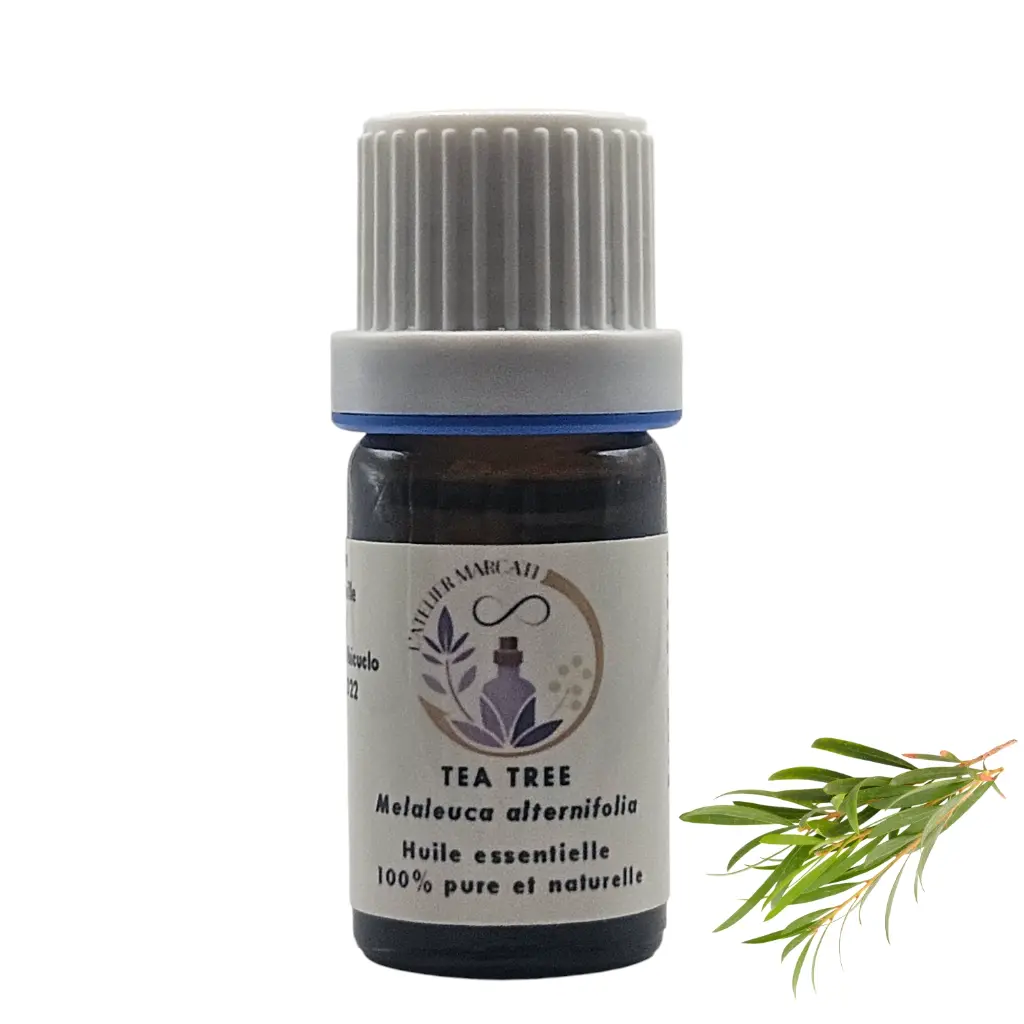Tea Tree Essential Oil
Botanical name: Melaleuca alternifolia

Chemotype and indications
Identity card
Name : Tea Tree
Botanical name: Melaleuca alternifolia
Distilled part: Branch
Botanical family: Myrtaceae
Origin: South Africa
Chemical composition:
- Monoterpenes: Alpha and Beta Pinene, Alpha and Delta Cadinene, Alpha and Gamma Terpinene (8 and 17%), Limonene, Myrcene, Para Cymene (17%), Terpinolene
- Monoterpenols (45 to 50%): Alpha Terpineol, Cis and Trans Thujanol 4, P Cyménol 8, Terpinene 1 ol 4 (25 to 45%)
- Oxides: 1.8 Cineole (5 to 9%)
- Sesquiterpenes: Aromadendrene, Beta Caryophyllene, Viridifloral
Physical properties and therapeutic indications
- Abscess*, Aphtha*, Gingivitis*, Stomatitis*
- Anti-infective*, Antiseptic*, Fungicide*, Virucide*, Broad spectrum bactericide*
- Bronchitis*, Acute nasopharyngitis*, Angina*, Otitis*
- Asthenia*
- Candidiasis* (oral*, chronic*, vaginal*
- Fungicide*, Vermicide (roundworm)*
- Surgical shock related to anesthetic (preventative)**
- Sunburn, and before sun exposure (preventative)**
- Gynecological candidiasis infection*
- Dry Eczema*
- Superinfected emphysema*
- Enterocolitis* (bacterial*, candida*, parasitic*, viral*
- Parasiticide (ankylostome, lambliase)°
Emotional, psychological properties and therapeutic indications
- Nervousness, trembling before menstruation and worse during menstruation
- Chilliness
- Inner turmoil, depression and nervous exhaustion
- Balancing
Additional information
Danger: May irritate some skins
Legend: * powerful, ** very powerful; *** extremely powerful (power value for the associated pathology)
Reference and bibliographic source: Lily BAYER and Dr Hervé STAUB, (2013) "In-depth Treatise on Phyto and Aromatherapy", Ed. Grancher. p. 577.
THE INDICATIONS IN AROMATHERAPY AND THE USE OF ESSENTIAL OILS DO NOT CONSTITUTE A MEDICAL DIAGNOSIS AND DO NOT REPLACE THE ADVICE OF A DOCTOR OR MEDICAL TREATMENTS!



